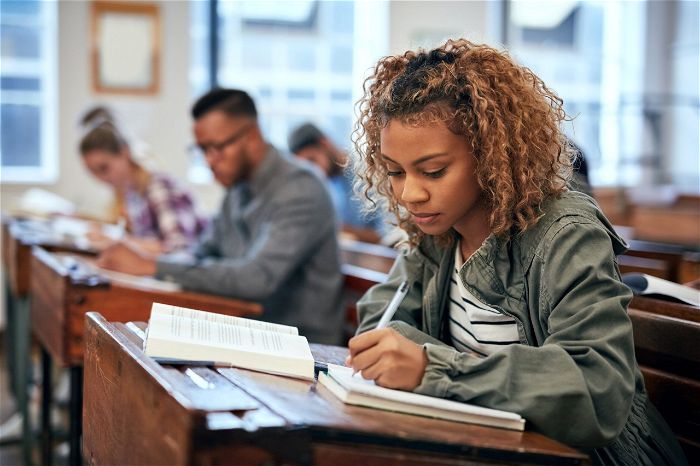
Help the Class of 2020 by Building a Better Education System for All
June 3, 2020
At a Glance
New strategies can put high school grads to work in communities and prepare for the future of work.
Like most people across country, those of us in JFF’s California office are worried about the high school graduating class of 2020. How will the COVID-19 pandemic change their lives? How will they graduate from an interrupted school year, and even if that is settled, what should they do next?
The California State University system made an early decision to hold classes online in the fall, but many colleges haven’t announced what they will do. Some have said they will invite students back to campus, even though it’s unclear how they can do that safely.
Plans Upended
As a result, students have been left in the lurch, wondering what to do about college. Some have decided to save their tuition dollars and forgo school for now instead of taking a chance on online learning or an on-campus—but socially distanced—experience. High school graduates who had no college plans are also affected: They are entering a daunting job market where they will compete for work with upward of 40 million newly unemployed adults.
We need to help young people, and in so doing build something better for those who follow them.
This shock to the California and U.S. economies has magnified the inequality in our education systems and exposed the fact that educational outcomes often do not align with the needs of the labor market.
We need to help young people, and in so doing build something better for those who follow them.
Even when the pre-COVID economy was humming, its benefits were unequal: The rate of 18-to-24-year-olds neither working nor in school was on the decline for all populations but still disproportionately high for black and Latinx populations. Workers from those groups also earned lower wages, and their jobs were more vulnerable to obsolescence due to automation. And high school graduates from low income families were entering and completing postsecondary education at far lower rates than their peers, because they had limited access to the learning opportunities and financing necessary to prepare for and enroll in college.
Schools and colleges will be further challenged when we begin the process of rebuilding the economy. California Governor Gavin Newsom has already warned of a 10 percent cut for K-12 education and similar reductions for public higher education. Those cuts will likely lead to lower overall college enrollment and completion rates and exacerbate existing racial, ethnic, and socio-economic inequities.
Let’s Rethink Education
We must get to work developing immediate solutions to help this year’s high school graduates surmount the challenges they are facing, and at the same time we must take advantage of this opportunity to build a better education system—one that benefits everyone.
To do that, we need to rethink education for older adolescents and develop programs that do the following:
- Meet the needs of the labor market and provide students with clearer connections to careers by integrating learning and work
- Reduce the time it takes students to earn postsecondary credentials by offering credit for the knowledge and skills they acquire, not just the time they spend in class
- Help students develop relational skills and teach them to “learn how to learn,” so that they are able to adapt in the face of automation and do work that computers can’t
- Provide students with opportunities to build social capital by connecting them to new people, employers, and resources
It’s time for innovation that can best be advanced by partnerships of schools and colleges, businesses, communities, state agencies, and philanthropies. We should design new environments for learning that will benefit our economy well into the future while tapping the potential of young people to help our communities now.
Create a More Inclusive Economy
These new learning options should serve as powerful alternatives or complements to traditional education that create a more inclusive economy by empowering young adults, particularly those from underserved groups.
Here are some examples.
Projects that address real-world problems. Based on the project-based learning model used in programs like NuVu Studio and the Possible Project in Cambridge, Massachusetts, these experiences would offer students opportunities to seek solutions to vexing problems under the guidance of expert adults. Students working on crisis-related challenges could design ways to improve local food supply chains, implement workplace social-distancing guidelines, or keep municipal services up and running. They could also tackle longer-term challenges such as the local impacts of global warming.
These experiences could be co-designed by schools and community-based youth programs working with colleges and universities, and they could provide college credit. In communities where in-person learning is less feasible, programs could use remote learning platforms based on virtual reality and augmented reality technologies.
New programs should . . . create a more inclusive economy by empowering young adults, particularly those from underserved groups.
Restructured programs for grades 11-14. Co-designed by employers, K-12 leaders, community colleges, and four-year colleges, new institutions that take a new approach to the last two years of high school and the first two years of college could help students develop skills that are in demand in the local labor market and prepare graduates to transfer to four-year programs. This model would give young people early exposure to the knowledge and skills needed for careers and postsecondary education. And it would allow students to earn technical credentials with labor market value while also earning academic credits that could be applied to bachelor’s degree programs.
Service corps. Like AmeriCorps, a service corps program would offer young adults an opportunity to devote a year to community service to address COVID-created or other challenges while being paid. To build college momentum, students should also receive college credit for these experiences. (To learn more about service programs, read the recent JFF blog post “National Service: A Lifeline for Disconnected Young People.”)
A Compelling Need for Transformation
The programs we’ve discussed here are not entirely new ideas. In fact, they elaborate on some strategies that JFF and many partner organizations have long promoted, including early college high school and dual enrollment programs, Linked Learning, Guided Pathways, Pathways to Prosperity, project-based and work-based learning, and City Year.
Although they’re all very effective, those established programs haven’t transformed the traditional model of young adult education at scale. But that’s because we haven’t had a compelling need to apply them collectively to effect change by strengthening the relationships between learning, schooling, communities, and economies while tapping the full potential of all young people. Until now.
Related Content

States Look to Strengthen College in High School Programs Amid COVID-19
In a rapidly reimagined virtual workshop, officials from five states work on ways to strengthen college in high school programs, which will have an important role to play in a post-COVID-19 world.

Maria Flynn in "With Decisions Coming Due, Sleepless High School Seniors Worry College May Not be Worth It"
April 28, 2020
Education
Accelerating our education systems toward equitable economic advancement. Today’s education ecosystem must meet the needs of today’s learners. This means learner-centered outcomes, pathways between education and careers, and policies and practices that support both degree…
